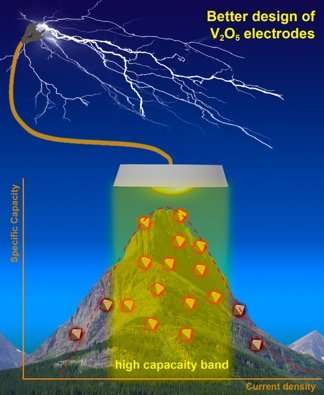Researchers identify concepts to measure battery performance

How do we know if a new battery is good? Batteries that perform well are invaluable to a number of resources that we use daily, such as cell phones and laptops, but also those that we are utilizing more frequently than ever before, such as drones and electric vehicles. Researchers in the Texas A&M University College of Engineering have identified two factors that can be used to measure the performance of batteries.
Yuan Yue, lead author of the published manuscript and a graduate student in the Department of Materials Science and Engineering, and Dr. Hong Liang, the Oscar S. Wyatt Jr. Professor in the Department of Mechanical Engineering and affiliated faculty member in materials science and engineering, collected and analyzed experimental data from over 250 scholarly articles published in the last decade. The duo began analyzing the structures and performance of the V2O5 electrode to derive key characteristics that could be used to optimize batteries.
"To be used as an electrode, V2O5 has three modes of lithium ion intercalation," Liang said. "We know from using the fundamentals of electrochemistry that the electrochemical performance of a battery is dominated by how lithium ions move in and out of structures through a process called intercalation."
Liang and Yue found that the two concepts of high capacity band and total capacity retention were the key to evaluating the electrochemical performance of V2O5 electrodes.
"The most significant and exciting part of this research is finding the right path to optimize the design of batteries," Yue said. "Construction of the new concept about the maximum ability of the specific capacity of a V2O5 electrode shines enormous light to the field."
The conclusions of their work allow for further development of finding the optimal way to design a lithium-ion battery electrode.
"The hints are, for example, using hierarchical-structures to increase power level, adding carbon materials or ions to increase energy density and using porous current collectors to increase capacity," Liang said. "Those general strategies will bring broad impacts to the significant efforts in developing better electrode materials from both academic and industrial researchers."
The development of improved lithium-ion battery cells could be used for power sources of cell phones, drones, electric vehicles, laptops and smart grids in the future.
More information: Yuan Yue et al. Micro- and Nano-Structured Vanadium Pentoxide (V2 O5 ) for Electrodes of Lithium-Ion Batteries, Advanced Energy Materials (2017). DOI: 10.1002/aenm.201602545














